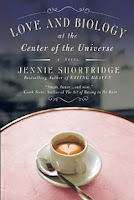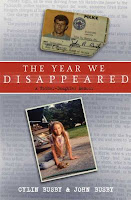Interviewed by
Melissa 
Christine Son is a lot of things: a woman, a lawyer, a Korean-American, a person who "loves peach cobbler, silly movies, laughter, stand-up comedians, The Daily Show, Hawaii,
Balenciaga handbags, Texas Hold ‘Em,
Belvedere vodka, chocolate, Spam (the quasi-food, not the Internet scourge)." And now, she can add writer to that list. Her first novel,
Off the Menu, was recently released, and we're pleased that she was able to take time out of her busy schedule to answer some questions about her book, about being a child of immigrants, and about balancing
lawyering with writing.
MF: This is your first novel; congrats! Since it's just been released, could you tell our readers a bit about your book?
CS: Off the Menu is about the balance that three, twenty-something year old, successful Asian-American women must strike between who they are (which is the embodiment of everyone's expectations, including their own) and what they want to be (which is different than what anyone would think for them). For example, a character named Whitney is a Harvard grad who is working at a large law firm, but she harbors secret desires to be a folk singer, a path that would floor her parents and, as she believes, her friends. Hercules is an incredibly successful restaurateur, but her relationship with her unassimilated Chinese father threatens her understanding of self. Audrey is adopted by incredibly wealthy parents who think she’s throwing away her life by marrying someone “beneath her.” The story’s also about friendship, because the main characters have been best friends for fifteen years, yet they don't share the most important aspect of themselves for fear of public failure and judgment. In a way, it's my story, as I became a lawyer in part to fulfill what everyone expected of me, my own secret ambitions of writing and my unwillingness to share with anyone what I was doing until the book had sold. Silly, I know. But I think a lot of people have experiences similar to mine.
MF: Lawyer to writer seems like a big career change. Was writing something you always wanted to do, or was this something out of the blue? Have you found it difficult to balance these two parts of your life?
CS: I think I always did want to write, but it seemed like such a luxury of sorts. There was the real world I had to deal with, school loans and family, familial expectations and my own notions of "success." But in the end, I realized that if I was ever going to write, I just had to do it. So I did. I left the law firm and went in-house with a company, which was great in providing a more human work-life balance. When I'm writing, my days are pretty long, and it does feel like I have two full-time jobs, but I love them both. I think that's really the secret to balance--going after those things in life that really matter to you (regardless of what they are) and letting everything else take a back seat.
MF: Do you hope to eventually leave lawyering behind and become a full time writer, or will writing just be something to do in addition to being a lawyer?
CS: People have asked me that a lot, and they always seem a little disappointed when I say that I actually quite like being a lawyer. At least being an in-house lawyer. So long as my relationships at home don't suffer, I'm thrilled to bits to be able to do both. Working gives me a perspective I might not otherwise have. It affords me relationships that I might not be able to dream up. I love my friends at work. And I enjoy the substantive matters of the law. So for now, I'm happy to be able to do both. Of course, when I'm having a wretched day at the office, it is nice to fantasize about leaving to write full time...
MF: How long did the process of writing from conception to finally seeing it in print? How do you feel finally getting your story out there?
CS: Off the Menu went through so many iterations. From first conception to finally seeing it on the shelves--I'd say it took about two and a half years. Publishing is such a hurry-up-and-wait industry. You write, write, write, pray, pray, pray, and then wait, wait, wait. But once a publisher says "yes," it seems like time travels at warp speed. There are tons of revisions, deadlines, editorial guidance. I am so incredibly fortunate to have had such an amazing editor who really molded the story and made it better. Off the Menu's pure fiction, of course, but all fiction is based on something familiar, whether it's a writer's experiences, or her feelings or her fears or whatnot. So, while I'm exhilarated to get my story out there, a part of me feels completely naked and vulnerable. This is my first book, so I don't know if that feeling ever goes away, but I hope that that insecurity doesn't affect the way I write in the future. I've been keeping Salinger's counsel in my mind, which is to say that I'm writing as if no one will read my work. It gives me the confidence and audacity to be honest and naked and vulnerable and all the qualities that make a book authentic.
MF: A lot of people get asked if their first novel is autobiographical. Since your novel about Asian women, I suppose this question is inevitable: did you get your ideas for the novel from your life or people you know?
CS: Of course! Whitney's story isn't exactly like mine. Neither are Hercules's or Audrey's. But I understand where they're coming from, the emotions and feelings they experience. I understand the pressure they put on themselves and the fears they have about disappointing their families or each other or themselves. And a lot of my friends understand the same things, which became a frequent topic of conversation. In fact, those conversations were in large part the impetus of Off the Menu. From a cultural stance, my being Korean (and in Texas, too) does give me another set of lenses with which to view my surroundings, another perspective that dovetails or diverges from those around me. At the same time, the issues in the book (and really, in life in general) are ultimately those that everyone can understand--the balance between the real world and the secret dreams we have, the desire to take care of or please our parents, the friendships that come with both support and increased (at least, perceived) expectation. So, to answer your question in very verbose way, Off the Menu was both a product of my own life and those of my friends, but I also think it's very accessible to everyone.
MF: I think so, too. Which makes me wonder: what do you think was more important in the process of telling this story: being a woman, or being a child of immigrants? Or do you think that they were both equally important?
CS: This is such a great question. The pressure of being a woman and of being a child of immigrants is so similar and so different. They both come with the notion that you have to try harder to succeed. Maybe it's not fair, but I've experienced it enough in the legal industry enough to know that I have to work harder, be better prepared, know my stuff better than the guy next to me if I want to move up. Plus, given that I look like a child, and an Asian one at that, it's even more important that I assert my authority from the outset if I want to be taken seriously. It's a process of perception, of dealing with the world as it sees me, whether shaped by looks or stereotypes or whatnot. Being a child of immigrants, by contrast, is a process of introspection, of dealing with the world as I see it. As I feel it. For sure, there are additional pressures to do right by my parents. What immigrant child hasn't heard her parents say that they moved to this country for her, even if it's not true? What second-generation kid hasn't heard her parents talk about the sacrifices they made to give her a better life? It's another notch on the belt of reasons why so many Asians strive to be doctors or lawyers or engineers, why so many of us feel more bound to traditional professions than to up the risk that we might disappoint our parents. At some point, though, I think we reach a place where we question what the definition of a "better life" really is, if it's the intrinsic joy of a myriad options or financial security. Satisfaction of fulfilled desire or material success. Certainly, this is a tension that children of immigrants share, but it's most definitely not unique to us.
MF: I like that you set the book in Texas; it's not something you expect from a book with Asian main characters. Do you think that there's anything inherent Southern about your book? Or are Asians in Texas somehow separate from your typical "Southern" culture?
CS: I don't know if there's anything inherently Southern about Off the Menu. For sure, there’s a unique flavor in Texas, and to a large extent, I think first-generation Asians are more insular and therefore less assimilative of idiosyncrasies in this state. Because there does tend to be more of a communal attitude (Asians sticking with other Asians), there’s less opportunity to absorb and adopt into one’s life the Texas or Southern culture here. I think second-generation Asians are much more in tune with Texas/Southern culture. I would certainly consider myself to be a Texan. As are the girls in the book.
MF: What do you hope readers will get out of your book?
CS: That it's never too late to reach out for what you want, no matter how small or big it is. It's your life, and you only get one shot. For me, it was so much worse to wonder what could have been with my writing than to have tried and failed miserably. The not-knowing is so much more tortuous and consuming and eventually, I find that it affects every aspect of my life. The book is uplifting, and while it focuses on each girl's conflict of the real world and the dream one, it's also about the friendship they share, the surprising encouragements and support they give each other. Yes, they're competitive and ambitious and aggressive and so on, but they're also each other's most ardent cheerleaders. Which I think is an invaluable comfort.
MF: What are your five favorite books of all time?
CS: So many to choose from! This list might change by the time the interview posts, but for now, I love, love, love: The Life of Pi by Yann Martel; Bel Canto by Ann Patchett; The Absolutely True Diary of a Part-Time Indian by Sherman Alexie, Middlesex by Jeffrey Eugenides and About a Boy by Nick Hornby.
MF: If you don't mind, what can we look for from you next?
CS: Well, I'm working on a new novel that focuses on two dysfunctional families who merge through a marriage of convenience. It's a bit of a mess right now, but it's essentially about blending haves and have-nots in an unconventional way. I'll definitely update as the story solidifies, though!
Thanks so much for your time, Christine!



















